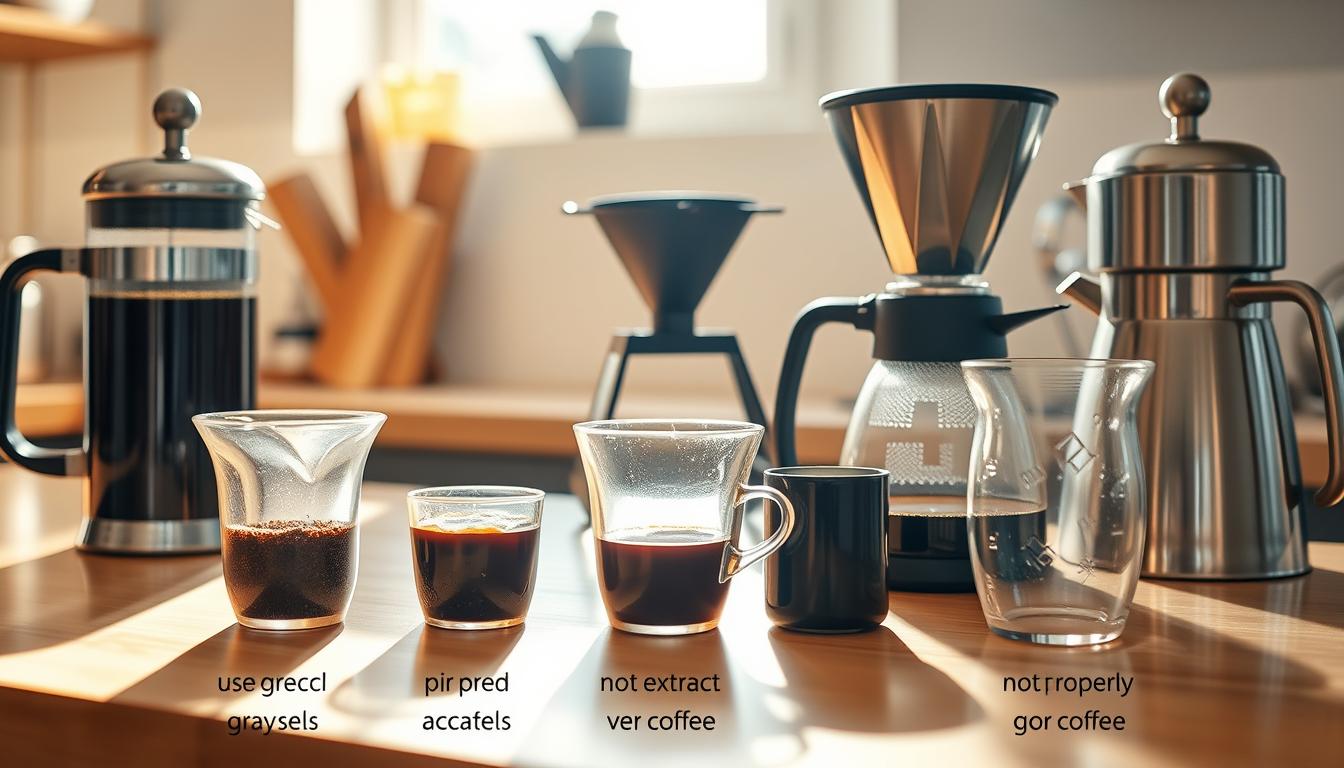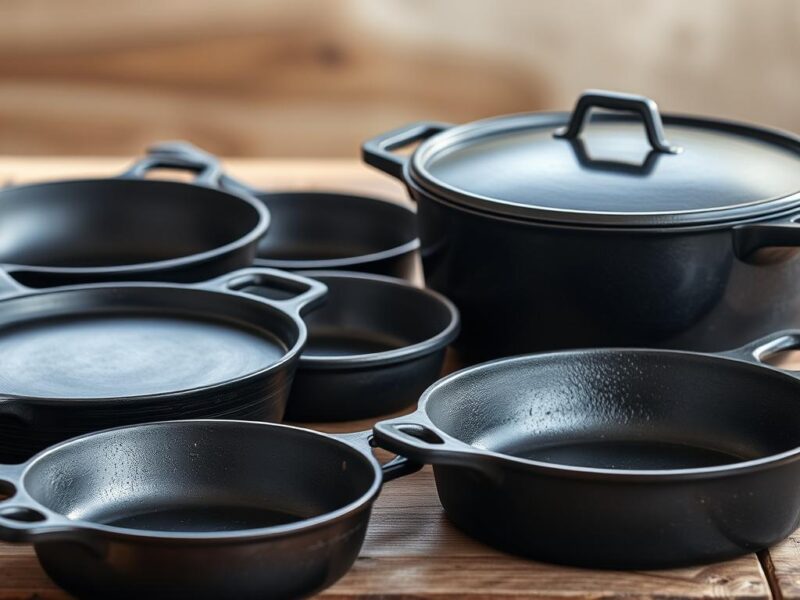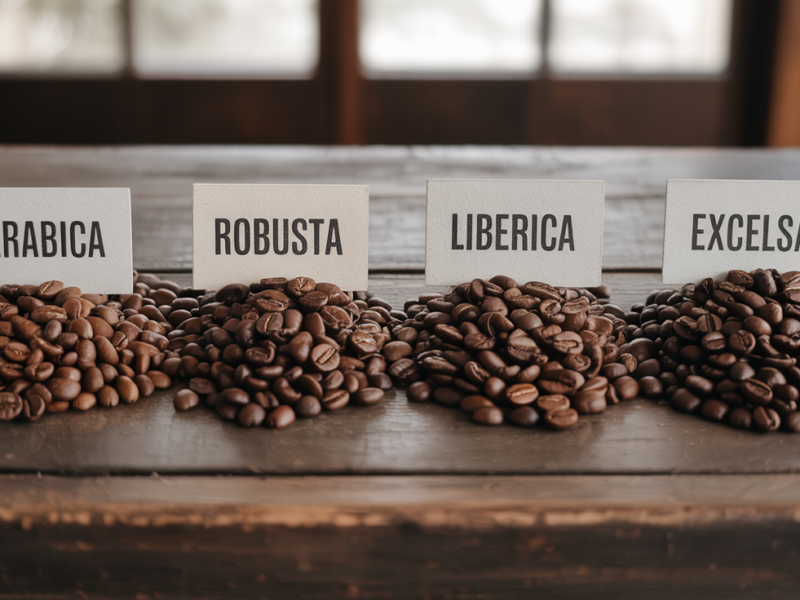That morning ritual you think is fueling your day? It might be failing you harder than a decaf espresso shot. While 3 out of 5 Americans drink coffee daily, most never experience the rich, complex flavors their beans could deliver – not because they lack fancy equipment, but due to simple technique stumbles.
Here’s the wake-up call: your brewer’s price tag matters less than how you use it. As noted in research on common brewing errors, even premium machines often miss the ideal 195-205°F temperature window. The result? Bitter undertones or flat flavors that leave you reaching for creamer instead of savoring your roast’s true character.
This isn’t about becoming a ~coffee sommelier~ – it’s about fixing what’s actually broken in your routine. From stale grounds to rushed brewing times, small missteps compound into a mug of mediocrity. The good news? Mastering your morning brew requires less effort than pronouncing “chemex” correctly.
Key Takeaways
- Water temperature impacts flavor more than your coffee maker’s brand
- Freshly ground beans beat pre-ground options every time
- Proper storage keeps coffee flavorful for weeks
- Machine cleaning removes hidden flavor-killing residues
- Brew time adjustments can transform weak coffee into bold perfection
Let’s ditch the guesswork and start brewing like your local café’s most trusted barista – no expensive gear required. Your taste buds (and possibly your morning mood) will thank you.
Understanding the Science Behind Your Morning Brew
Your daily ritual isn’t just about caffeine – it’s a carefully orchestrated chemical dance. The difference between bland and brilliant lies in understanding two critical factors that transform roasted beans into liquid magic.
Why Your Water’s Heat Matters More Than You Think
That steaming kettle? It’s either your best ally or worst enemy. Water between 195-205°F acts like a master key, unlocking flavor compounds without destroying them. Go hotter than 205° and you’ll incinerate delicate oils. Cooler than 195°? Flavors stay trapped like unopened presents.
Most automatic brewers never hit this sweet spot – which explains why pour-over methods often taste better. The magic happens when heat extracts:
- Bright acids (for that fruity zing)
- Rich oils (creating velvety texture)
- Aromatic compounds (hello, scent memories)
Extraction – The Flavor Balancing Act
Think of brewing as a treasure hunt where temperature controls the map. Too fast? You miss the gold. Too slow? You drown in bitter over-extraction. Professional baristas measure extraction percentages because time + heat = taste.
Here’s the kicker: boiling water causes uneven extraction. Some compounds over-develop while others never emerge. The result? That harsh acidity masking your beans’ true personality. Next time your brew tastes flat, check your water’s heat before blaming the beans.
Choosing the Right Coffee Beans and Grinder Techniques
The secret to barista-level coffee lives in your bean selection and grinder type. While brewing methods get most attention, your morning cup’s potential gets locked in during these crucial first steps. Think of it as building a house – no amount of paint fixes a cracked foundation.
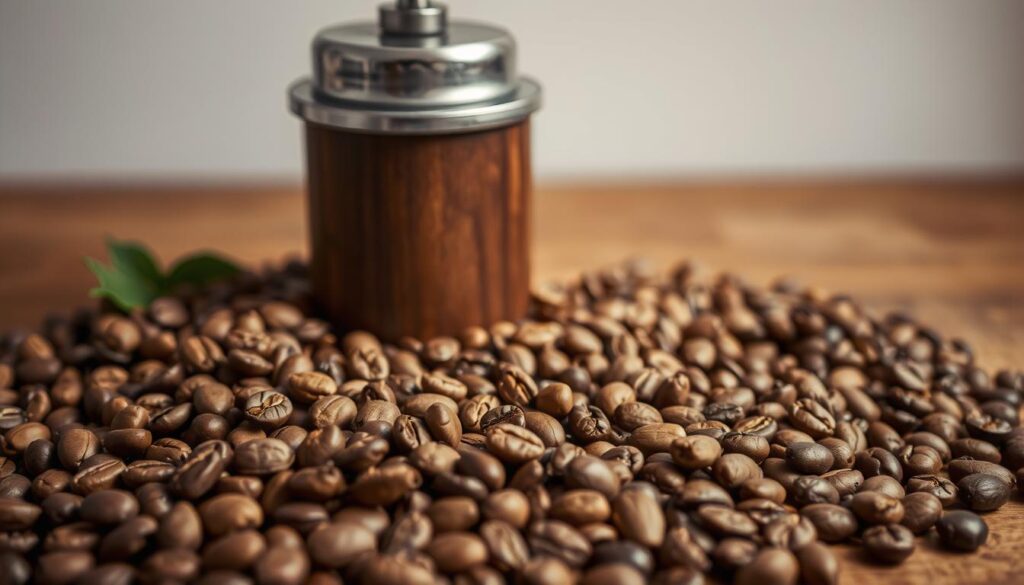
Fresh Beans Versus Stale Beans
Freshly roasted beans are live ingredients – they breathe, change, and fade like ripe fruit. Those glossy bags at supermarkets? Many left their roast date behind months ago. True flavor peaks within 21 days of roasting, then gradually flatlines. Stale beans aren’t just dull – they’re chemically different, losing the oils that create coffee’s signature aroma and mouthfeel.
Pre-ground options double the problem. Once ground, beans oxidize faster than sliced apples. That “convenient” bag? It’s like buying pre-sliced bread that starts molding the moment you open it. Always buy whole beans and grind them yourself – your nose will thank you.
Blade Grinder Versus Burr Grinder: What Works Best
Your grinder determines whether you get flavor fireworks or a damp squib. Blade models spin like tiny helicopters, randomly chopping beans into uneven chunks. This creates a messy extraction where some grounds overbrew while others stay underdeveloped.
Burr grinders work like precision gears, crushing beans into uniform particles. The result? Even extraction that reveals hidden tasting notes – think chocolate undertones or floral hints. Different brew methods need specific grind sizes:
- Coarse: French press (4-6 minutes brew time)
- Medium: Drip coffee (2-4 minutes)
- Fine: Espresso (25-30 seconds)
Invest in a burr model, and you’ll suddenly taste what your beans actually cost. It’s the difference between hearing a symphony through tin cans versus front-row seats.
7 Mistakes You’re Making With Your Morning Coffee
Your coffee’s hidden enemies might be sitting in plain sight – lurking in your faucet and cupboard. Two often-overlooked factors can turn a potential masterpiece into a mediocre mug: what you brew with and what you brew in.
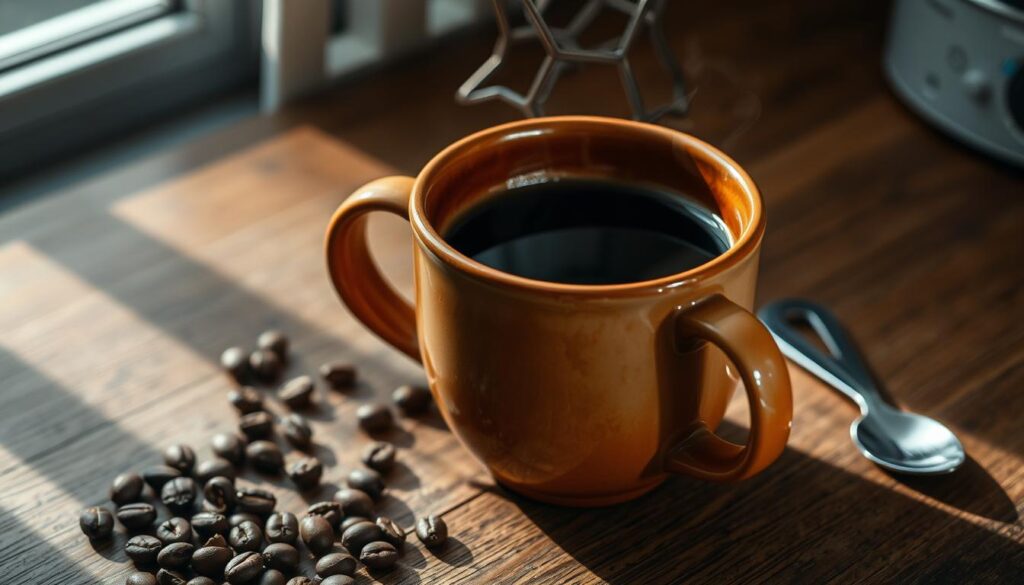
The Liquid Foundation You’re Getting Wrong
Tap water isn’t neutral – it’s a flavor contortionist. Minerals like calcium and magnesium distort coffee’s natural acidity, while chlorine adds chemical undertones. One study found filtered water improves taste perception by 23% compared to unfiltered tap.
Here’s why it matters:
- Hard water exaggerates bitterness
- Soft water mutes brightness
- Chlorinated water creates artificial aftertastes
Spring water or activated charcoal filters remove these variables. Think of it as giving your beans a clean canvas instead of a graffiti wall.
Your Mug’s Secret Temperature Betrayal
That beautiful thin-walled cup? It’s stealing heat faster than a pickpocket at a carnival. Porcelain and glass absorb warmth immediately, while thick ceramic acts like a thermal blanket. Pre-heat your vessel with hot water for 20 seconds, and you’ll extend optimal drinking temperature by 4-7 minutes.
Mug materials ranked by heat retention:
- Double-walled stainless steel
- Stoneware diner mugs
- Handmade pottery
- Delicate china
Cold cups shock coffee into rapid cooling – a tragedy when you’ve nailed the brew. Treat your mug like part of the brewing process, not just decoration. Your last sip should still whisper warmth, not scream “microwave me.”
Optimizing Your Coffee Brewing Methods at Home
Your brewing device isn’t just a tool—it’s a flavor sculptor. While automatic machines dominate kitchen counters, manual methods unlock hidden dimensions in your beans. Let’s explore three approaches that transform caffeine fixes into crafted experiences.
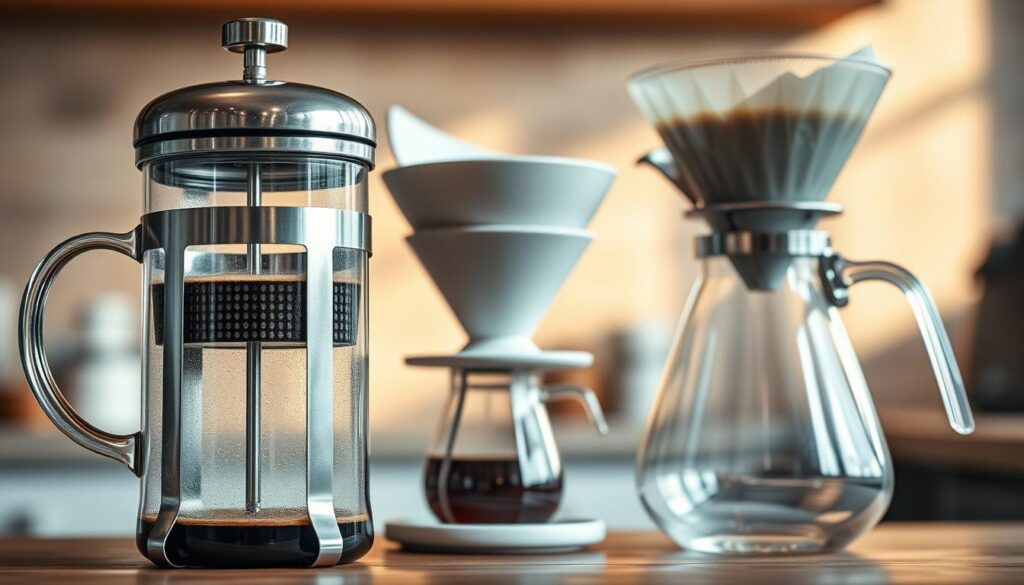
Precision vs Convenience: The Great Brew-Off
Automatic drip makers excel at volume, not virtuosity. Their heating elements often stall at 185°F, leaving flavors half-awake. “It’s like baking cookies at 300°F—you get edible results, but no golden edges,” notes a specialty roaster from Portland.
Manual methods flip the script:
- French press immersion extracts oils machines filter out
- Pour-over techniques control water flow for balanced acidity
- Steel filters in manual brewers preserve natural coffee textures
That $30 ceramic dripper? It outperforms $300 gadgets because your hands become the smartest technology in the kitchen. Four minutes of focused pouring beats programmed mediocrity every time.
Here’s the kicker: optimal brewing isn’t about effort—it’s about intention. Preheating your french press while grinding beans creates a ritual that automatic makers can’t replicate. Your morning becomes less about caffeine procurement and more about flavor discovery.
Nailing the Perfect Coffee-to-Water Ratio
The difference between “meh” and magnificent coffee often comes down to simple math. Your brew’s success isn’t mystical—it’s measurable. Precision beats guesswork when extracting flavors, whether you’re using a $15 dripper or a high-end espresso machine.

How to Measure Grounds and Adjust Strength
Two tablespoons of ground coffee per six ounces of water isn’t just a suggestion—it’s liquid alchemy. This ratio creates a balanced foundation where bright acidity and rich body hold hands rather than wrestle. French press enthusiasts should aim for eight heaping teaspoons in a standard 34-ounce press—enough to make your taste buds stand at attention without assaulting them.
Why measurement matters:
- Under-measured water turns your brew into timid dishwater
- Overloaded grounds create bitter sludge that could power a diesel engine
- Consistent ratios let you tweak strength like a soundboard—controlled adjustments instead of wild guesses
Barista pro tip: Use a kitchen scale for accuracy. Two tablespoons equal roughly 10 grams of coffee, but bean density varies. As one Coffee Science Quarterly study notes: “Eyeballing measurements introduces more variables than a middle school science fair.”
“The Golden Ratio is your North Star—not your prison guard. Find it, then wander.”
Start with the basics, then personalize. Prefer bolder flavors? Add an extra teaspoon. Love mastering pour-over techniques? Adjust your pour speed instead of changing ratios. Your perfect cup isn’t found—it’s forged through delicious experimentation.
Elevating Your Coffee Experience with Better Add-Ins

Your coffee’s final act isn’t just about the beans—it’s the supporting cast you invite to the party. Those last-minute additions can either spotlight your brew’s natural charm or drown it in a syrupy soap opera. Let’s upgrade your supporting players.
Sweetness That Actually Makes Sense
White sugar is the fluorescent lighting of sweeteners—harsh and one-dimensional. Raw turbinado sugar? That’s golden-hour sunlight. Its molasses notes harmonize with coffee’s natural caramel undertones instead of clashing. Next time you see those brown packets at cafes, grab two—they’re not there for rustic decor.
- Nonfat milk turns your cup into diluted potential—whole milk adds velvet texture
- Half-and-half creates a dessert-like experience without added sugars
- Plant-based milks need fat content—look for “barista blend” labels
Spice Routes to Flavor Discovery
Your spice rack holds secret passageways to coffee nirvana. A pinch of cinnamon in grounds before brewing creates aromatic alchemy—like finding a hidden track on your favorite album. Cardamom pods? They’re the espresso martini of spices—unexpected but irresistible.
Pro moves for adventurous palates:
- Grind fresh nutmeg into whipped cream topping
- Steep star anise in warm milk before frothing
- Add cocoa powder to dark roast grounds pre-brew
“Great add-ins don’t mask flaws—they reveal hidden depths.”
Your morning cup shouldn’t taste like a chemistry experiment gone wrong. With smarter sweeteners and strategic spices, you’ll discover flavors that make drive-thru coffee taste like yesterday’s reheated leftovers.
Avoiding Common Presentation Errors in Coffee Serving
Your coffee’s last hurdle isn’t the brew—it’s how you present and preserve it. The right container acts like a thermal bodyguard, while neglected equipment becomes flavor’s worst enemy. Presentation perfection requires equal parts science and habit.
From Brew to Sip: The Temperature Timeline
Thick-walled mugs aren’t just cozy—they’re heat preservation machines. Thin ceramics leak warmth faster than a screen door stops snow. Preheating your cup with hot water buys 7 extra minutes of optimal sipping time—the difference between savoring flavors and choking down lukewarm regret.
Used grounds left in the filter aren’t just messy—they’re mold’s welcome mat. Toss them immediately after brewing. That funky aftertaste? It might be bacteria colonies partying in your machine’s hidden corners.
Monthly maintenance matters:
• Vinegar-water cycles dissolve mineral buildup
• Scrubbing the carafe eliminates oily residues
• Replacing filters prevents papery aftertastes
Your coffee deserves better than a dirty machine. Clean equipment isn’t about aesthetics—it’s about health and flavor integrity. Treat your brewer like a prized skillet: well-maintained, always ready to perform.
